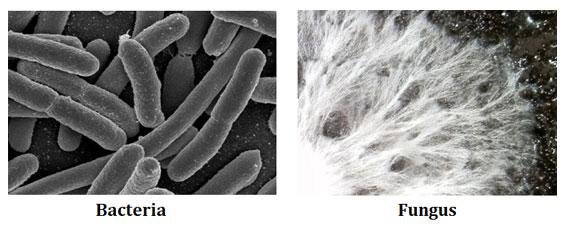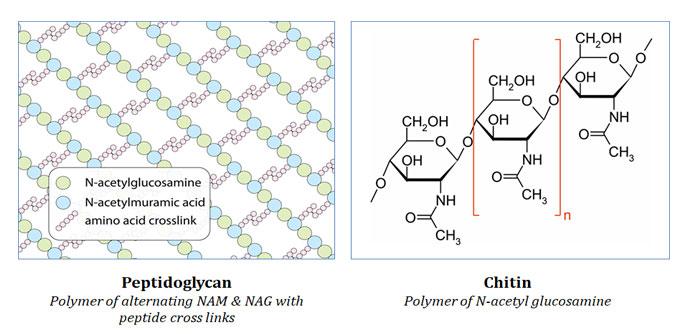Cell walls are rigid structures surrounding plant, fungal, and bacterial cells, providing support, protection, and regulating cell shape and osmotic pressure. The chemical structure and organization of cell wall in different groups varies considerably. The bacterial cell wall is a protective outer layer made of peptidoglycan, providing structural support. It distinguishes bacterial cells from others and is a target for antibiotics. Fungal cell walls consist of chitin, a tough polysaccharide, providing structural support and protection. They also play a vital role in fungal growth, morphogenesis, and interaction with their environment. This article summarizes the major difference between bacterial and fungal cell wall.
Microbiology Notes | Microbiology PPTs | Microbiology MCQs

Difference between Bacterial and Fungal Cell Wall
Characteristic Bacterial Cell Wall Fungal Cell Wall
Composition Contains peptidoglycan, a unique polymer made of glycan chains (NAM and NAG) and peptide crosslinks. Contains chitin, a polymer of N-acetylglucosamine.
Variation in Structure Bacterial cell walls vary among bacterial species, often differentiated by Gram staining. Fungal cell walls are relatively consistent in structure across different fungal species.
Rigidity Provides structural rigidity and helps maintain cell shape. Contributes to structural stability and protection from environmental stress.
Role in Protection Protects bacteria from osmotic changes and helps resist external mechanical forces. Provides protection against osmotic changes, predation, and environmental challenges.
Growth Inhibition Vulnerable to certain antibiotics (e.g., penicillin) that target peptidoglycan synthesis. Fungal cell walls can be targeted by antifungal agents like echinocandins.
Permeability Some substances can pass through the peptidoglycan layer, influencing exchange with the environment. Fungal cell walls have limited permeability, controlling nutrient and waste exchange.
Organization Complex organization with multiple layers, including the peptidoglycan layer and outer membrane in some species. Structurally simpler in comparison, composed mainly of chitin and other polysaccharides.
Fimbriae and Pili Bacteria can have surface appendages like fimbriae and pili extending from the cell wall. Fungi lack fimbriae and pili; their cell walls are more uniform in structure.
Morphology Effects Bacterial cell wall structure affects cell shape and division, influencing bacterial morphology. Fungal cell wall structure contributes to the overall morphology of fungal cells and hyphae.
Host-Pathogen Interaction Bacterial cell walls can contain components recognized by the immune system, contributing to pathogenicity. Fungal cell walls play a role in host-pathogen interactions, as they can contain immunogenic components.

<<< Back to Microbiology Notes
You may also like NOTES in...
BOTANY BIOCHEMISTRY MOL. BIOLOGY
ZOOLOGY MICROBIOLOGY BIOSTATISTICS
ECOLOGY IMMUNOLOGY BIOTECHNOLOGY
GENETICS EMBRYOLOGY PHYSIOLOGY
EVOLUTION BIOPHYSICS BIOINFORMATICS
You may also like...
NOTES QUESTION BANK COMPETITIVE EXAMS.
PPTs UNIVERSITY EXAMS DIFFERENCE BETWEEN..
MCQs PLUS ONE BIOLOGY NEWS & JOBS
MOCK TESTS PLUS TWO BIOLOGY PRACTICAL
